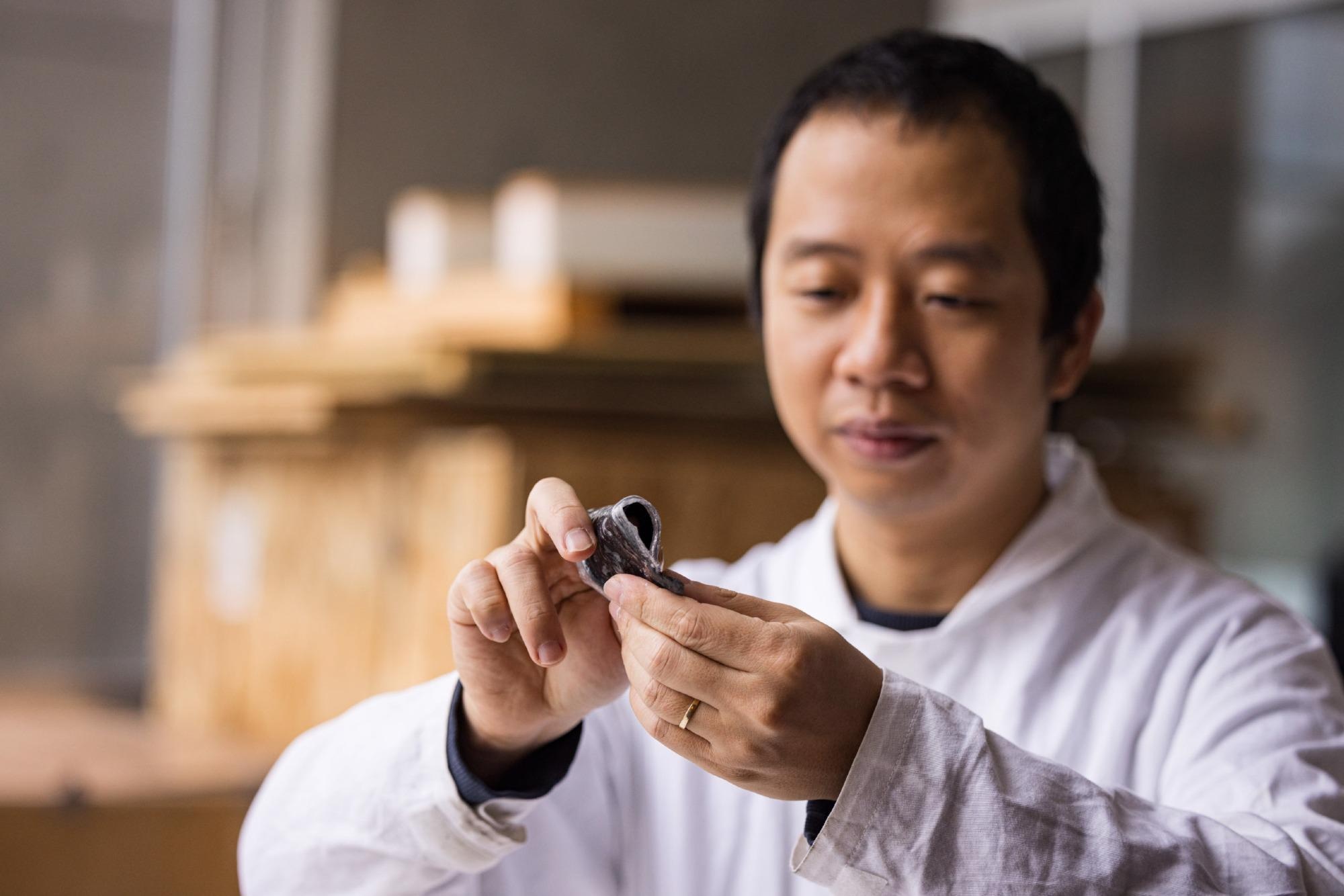Scientists from the University of British Columbia (UBC) have developed a first-ever flexible and washable battery. The battery works upon twisting or stretching to twice its usual length, or when tossed in the laundry.
 Dr. Ngoc Tan Nguyen and his colleagues have created a battery that is both flexible and washable. It works even when twisted or stretched to twice its normal length, or after being washed multiple times. Image Credit: Kai Jacobson.
Dr. Ngoc Tan Nguyen and his colleagues have created a battery that is both flexible and washable. It works even when twisted or stretched to twice its normal length, or after being washed multiple times. Image Credit: Kai Jacobson.
Wearable electronics are a big market and stretchable batteries are essential to their development. However, up until now, stretchable batteries have not been washable. This is a critical addition if they are to withstand the demands of everyday use.
Dr. Ngoc Tan Nguyen, Postdoctoral Fellow, Faculty of Applied Science, University of British Columbia
The new battery offers a host of engineering advances. The internal layers of a normal battery are made from hard materials enclosed in rigid casings. However, in this case, the researchers integrated zinc and manganese dioxide into a rubbery polymer to make them stretchable. Multiple ultra-thin polymer layers are encased inside a plastic casing to form the battery. The design creates an airtight, waterproof seal, ensuring battery integrity even after continuous use.
To test the battery’s seal, Bahar Iranpour, a Ph.D. student from the same team, suggested washing the battery. As the team continues to develop the technology, the battery should become even more durable. The team has successfully washed the battery 39 times so far.
We put our prototypes through an actual laundry cycle in both home and commercial-grade washing machines. They came out intact and functional and that’s how we know this battery is truly resilient.
Bahar Iranpour, PhD Student, University of British Columbia
Additionally, another crucial benefit was also provided by the zinc and manganese dioxide combination.
“We went with zinc-manganese because, for devices worn next to the skin, it’s a safer chemistry than lithium-ion batteries, which can produce toxic compounds when they break,” added Dr. Nguyen.
Cost-Effective Solution
The battery is being improved to increase its power output and cycle life, but it has already attracted interest from the industry. The team believes that when the new battery is ready for the market, it will probably cost the same as any ordinary rechargeable battery.
Wearable devices need power. By creating a cell that is soft, stretchable and washable, we are making wearable power comfortable and convenient. The materials used are incredibly low-cost, so if this is made in large numbers, it will be cheap.
Dr. John Madden, Electrical and Computer Engineering Professor and Director, Advanced Materials and Process Engineering Lab, University of British Columbia
“Wearable devices need power. By creating a cell that is soft, stretchable and washable, we are making wearable power comfortable and convenient,” added Dr. Madden.
Journal Reference:
Dr Nguyen. N. T., et al. (2021) Washable and Stretchable Zn–MnO2 Rechargeable Cell. doi.org/10.1002/aenm.202103148.